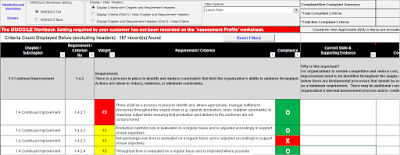 |
| Figure 1: Top management commitment to supply chain resilience (source: Business Continuity Institute/Zurich: Supply Chain Resilience Report 2015, Caversham.) |
Figure 1 shows, that in comparison to the results of the 2014 survey, top management commitment to managing supply chain risks increased by 4 percentage points - which is for sure a positive trend. However, still only one third of the respondents see a high impact of top management commitment. If we follow the arguments of the reports, top management commitment is seen as an enabler of supply chain visibility, the percentage of high impact commitment is relatively low. Nevertheless, the percentage of respondents who see a low or no impact at all is reduced to 25 %.
 |
| Figure 2: Consequences of supply chain risks (source: Business Continuity Institute/Zurich: Supply Chain Resilience Report 2015, Caversham.) |
One of the top question in risk management is 'what will be the consequences if risks do happen'? Figure 2 shows the consequences reported by the respondents of the survey. Not surprisingly, the loss of productivity is the type of consequence mentioned most. However, this type of consequence is an internal consequence, whereas the next important outcome are customer complaints, mentioned by 2 out of 5 respondents. Here, we can see, that consequences of risks are visible to and perceived by external parties.
 |
| Figure 3: Cumulative financial impact of supply chain interruptions (source: Business Continuity Institute/Zurich: Supply Chain Resilience Report 2015, Caversham.) |
As figure 3 reveals, the cumulative cost of risks (assessed over a period of 12 month) show, that more than half of the risks have a slightly low impact. (Of course, this number should be seen in relation to the financial size of the company.) On the other hand, every 7th company realized cumulative cost of 1 million EUR or more. If we look at the cost of the most significant incident (a graphic that is accessible in the original report), we see that every 11th organization had a single incident with risk-related cost of 1 million EUR or more.
 |
| Figure 4: Predominant sources of risks with a supply chain (Business Continuity Institute/Zurich: Supply Chain Resilience Report 2015, Caversham.) |
When we talk about supply chain risks, we should see the total supply chain. 'Supply chain visibility' is a key term - but has not been implemented widely yet. Figure 4 shows, that almost one third of the respondents does not (or is not able to) trace supply chain risks within the supply chain. Additionally, the diagram is also misleading, because it mixes exclusive and non-exclusive answers. The values for the first three bars should have been calculated on the basis of the 69 % of the respondents who do analyze the full supply chain. When we update those number we realize that
- 72 % of the companies who analyze the full supply chain, identified the predominant source of interruption on 1st tier,
- 30 % of those companies identified the main source on tier 2, and
- some 11 % see the predominant source of the risk on a lower level.















